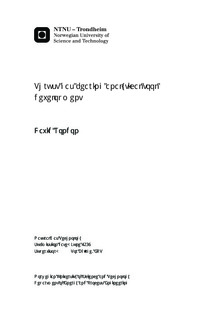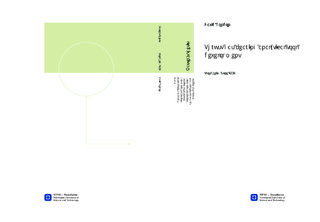| dc.description.abstract | Looking for a cheaper and low maintenance alternative to magnetic bearings, Statoil patented a new design for thrust gas bearings with honeycomb/hole-patterned surface. Honeycomb/hole-pattern surface on annular seals have been extensively studied, as a good seal it reduced leakage of systems previously using labyrinth seals, there is low temperature increase and provides better rotordynamic stability, qualities highly desirable for thrust bearings.
Statoil wants to develop an analytical tool to predict leakage, thrust force, damping and stiffness of axial bearings. The results from the tool must be compared to the results from Computational Fluid Dynamics (CFD) simulations before planning experiments and this tool must be reliable. A similar tool (ISOTSEAL) has been developed for annular seals by Texas A & M University in the United States and its results were validated with some experiment. Using a similar approach as in ISOTSEAL, the development of this analytical tool starts by using the Bulk-Flow theory to simplify the system from three-dimensional to one-dimensional. Two set of equations considered, the zeroth-order equations for steady-state solutions (leakage and thrust force) and the first-order equations for dynamic solutions (stiffness and damping).
The values for leakage are within 10% deviation from the CFD simulations carried out. But the thrust force results are not satisfactory. A sensitivity test was carried out and the results reflected that the entrance loss coefficient and the friction model were the most sensitive parameters. Later, calculations using different friction models were carried out, but there has been no much improvement since data from previous works is limited. The results for damping and stiffness showed considerable deviations from the CFD results, mainly due to the influence of the results from the zeroth-order equations, as they are also influenced by the friction model. In conclusion the analytical tool does not give reliable results; the model is highly dependent on the friction model and the conditions at the entrance. Another important factor is the ratio of the area of holes and the area of the surface and it affects directly the calculations for stiffness and damping. | |

